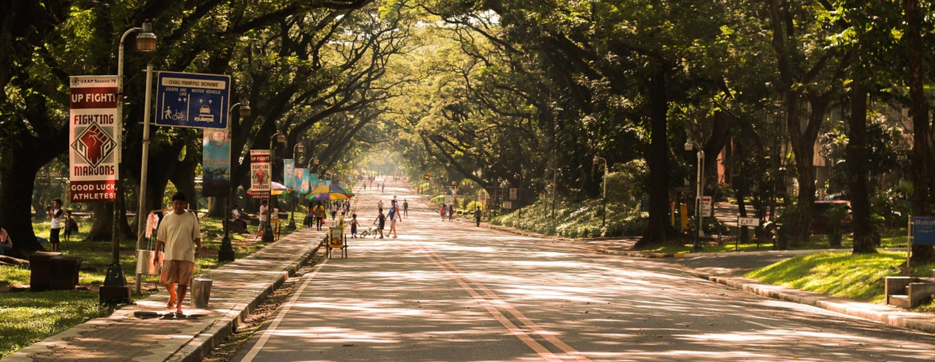Guide On Moving To The Philippines
The average annual salary of people in the Philippines is about $12,000. People make about $700-$1000 a month.
If you are retired and make only $900 or $1200 a month in retirement money, you would live well above your means compared to living in the USA. For $1200 a month you could have a nice little house with a maid outside of town in the peaceful countryside or an apartment for $240 a month in town. A 5 bedroom house on the beach would be about $700 a month.
If you make $3,000 a month, you’ll live like a king. For $7,000 – $10,000 a month, you can live as good as the president of the USA.
Great Tips For Visiting & Moving To The Philippines
Go there and rent a hotel ($20-$30 a night) before looking at places to rent or buy; online the prices are jacked way up on the rental and sales websites because the site owners know outsiders can afford it. You’ll find better deals quickly once you are IN the city.
- The country is very safe, more terrible stuff happens in any USA state in a day than in the whole country of the Philippines
- There are 7,000+ islands; flying or boating from island to island is as easy as taking an Uber in the USA
- In general the people are much more wholesome, fun, kind, patient, healthier and happier than they are in the USA
- A NICE restaurant quality dinner with a shot of vodka at a restaurant is about $7
- Going to the movies with popcorn for two is about $7
- You can get around without a car using Taxi’s all month for about $20 – you do NOT need a car (Get GRAB TAXI app on your phone, it’s safest bet for foreigners, DO NOT get into a Taxi that flagged you down or came up to you to offer you a ride, only get in ones that YOU flagged down off the street)
- If you really want to bring your car; stuff a bunch of stuff in it and bring it by car transport freighter for about $3000
- More family oriented
- Almost everyone speaks English
- There is cellphone service (I have T-Mobile, plenty of coverage, phone works like normal – almost everywhere in town) – However the local Globe Telecom phone service has amazing service all over the Philippines, even on the islands, and the plans are about $20 a month unlimited (which is 1,000 pesos)
- It doesn’t get cold
Travel By Plane – Tickets To Philippines
DO use this store: www.bt-store.com – tickets can be found for as low as $700 round trip.
At the airport you must have a ticket either back or out of the country within 30 days of your arrival, it’s a law there. However if you go and stay and miss your returning flight, you can legally stay for another 2 months for a total of 3 months, before you should fly out of the country and come back in again, so you don’t appear to be living there. However, if you stay past the 3 months and get a ticket out in month 4 or 5 no one will likely say anything.
About The Philippines Weather
Information taken from www.weather-and-climate.com website..
- During the months of January and December you are most likely to experience good weather with pleasant average temperatures.
- On average, the temperatures are always high.
- A lot of rain (rainy season) falls in the months of: May, June, July, August, September, October and November.
- Manila has dry periods in January, February, March and April.
- On average, the warmest month is May.
- On average, the coolest month is January.
- August is the wettest month. This month should be avoided if you don’t like too much rain.
- February is the driest month.
Philippines Travel Kit Items
This is a list of stuff I REALLY wish I had gotten in the states and had packed and ready…
- A karaoke bluetooth microphone (Filipino’s are the best karaoke singers in the world, better start practicing)
- A powerful battery backup USB powerbank, or two (fully charged) – having your phone die when you are out and about is something you DO NOT WANT to happen
- A solar USB/outlet charging pad
- A good should fanny bag/pack (backpack is too much, you need a nice small shoulder pouch that can carry your powerbank, money and other items around in a zipper – and line it with a big ziplock bag, because it might get wet or start raining all of a sudden)
- A powerful taser, and pepper spray – it can be scary if you go into the wrong neighborhood, or if the wrong neighborhood comes into your neighborhood (buy it here in the Philippines)
- A second iPhone charging cord, and second wall plug (these can get lost/stolen easy – i am on my 3rd one)
- A second phone that can use a SIM card, because GLOBE internet works everywhere here (even far out in the country) and you can get a Filipino number
- A small Chromebook laptop for traveling so I don’t have to bring my nice stuff around the islands
Philippines Emergency Contact List
For Life-Threatening Emergencies… Dial 117 or Type PNP <your message> then send to 2920
If using a Globe cellphone (Philippines main cell service is Globe), dial 02117
- TEXT Philippines National Police (PNP) – NCR: 0915-319-4129
- PNP-NCR HOTLINE: 838-3354 838-3203 / 8372471 Loc. 439
- PNP Public Information Office: 725-5115 (non-emergency calls)
- MMDA 136
- National Disaster Coordinating Council: 911-5061 up to 65
- Civil Defense Operation Center: Tel: 911-5061 / Fax: 912-5668
(for extreme emergencies caused by disasters/calamities) - Assn. Of Volunteer Fire Brigades: 522-2222
- Assn. of Volunteer Fire Chiefs & Firefighters of the Phils., Inc. 160-16
- Manila Fire Department: 527-3627 / 527-9623 / 527-3653
- Meralco: 16-211 / 16-220 / 631-111 / 09175592884
- Manila Water Company, Inc.:1627
- Maynilad Water Services, Inc. 1626
- National Poison Control Center (PGH): 524-1078 or dial 554-8400 loc. 3276
How to call a Philippine number from a US cell phone number?
- dial 011 + 63 +
- (don’t use the + signs)
Does A US Debit & Credit Card Work In The Philippines?
Yes, you can get money out at almost any ATM and ATM’s are everywhere, including the airport by the exit. Debit and Credit cards are accepted at most of the newer cities, where there are tall buildings and at almost all the shopping malls.


